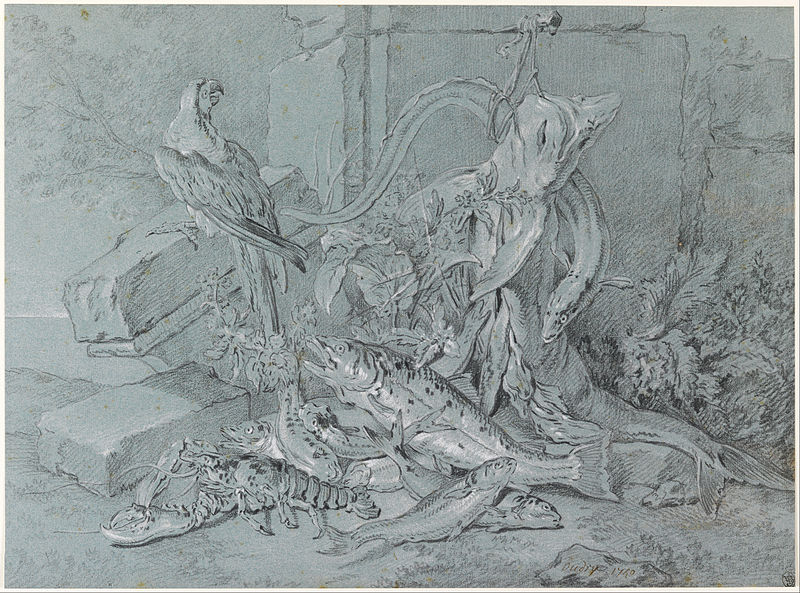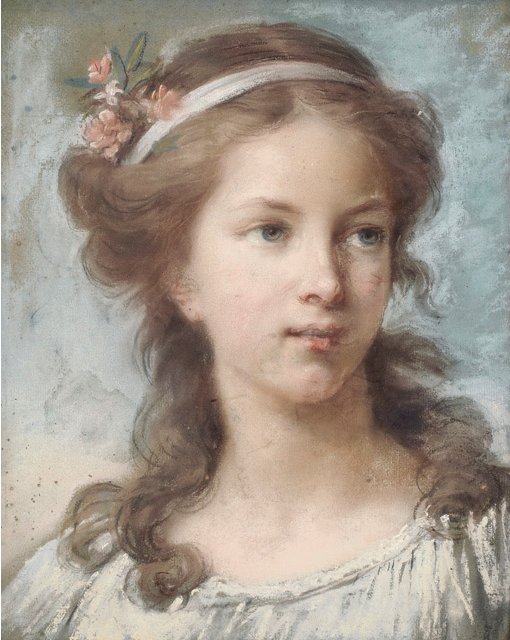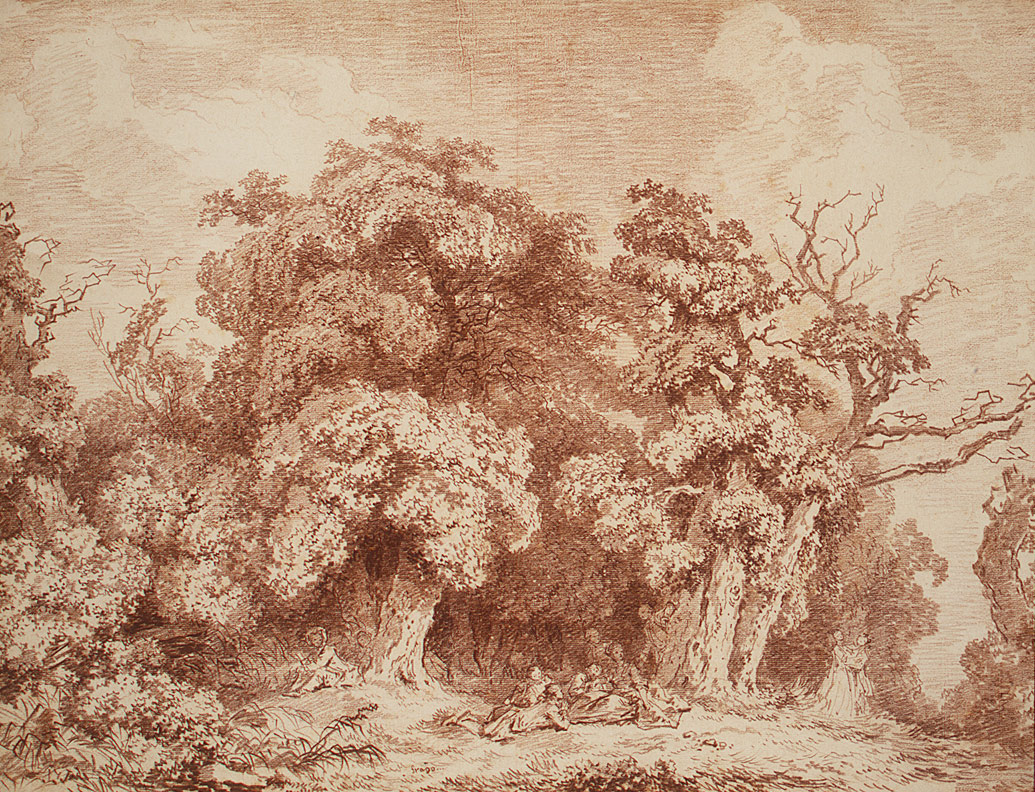Throughout the 18th century, France was an artistic center whose influence reached far beyond its borders. In a culture that placed a high value on artistic inspiration and individuality, the appreciation of drawings — one of the most immediate and intimate of art forms — saw a vast expansion. Though drawings continued to play a utilitarian role in the artist's creative process, they were increasingly made as independent objects, with an eye toward display and delectation. On view February 2 through April 25, 1999 at The Metropolitan Museum of Art, Eighteenth-Century French Drawings in New York Collections surveyed the many achievements of this widely-admired period of French art, when artists such as Watteau, Boucher, Fragonard, Robert, David, and Greuze, among others, created images of surpassing beauty and virtuosity.
More About the Exhibition
Culled from the holdings of The Metropolitan Museum of Art; the Pierpont Morgan Library; The Cooper-Hewitt, National Design Museum, Smithsonian Institution; and The Frick Collection, as well as 27 private collections in New York City, the exhibition brought together for the first time the highlights of a century of collecting. Ranging from Watteau and the early Rococo to the Neoclassicism of David and his followers, this selection of 100 outstanding drawings by 59 artists suggested the strong attraction Enlightenment France has held for New Yorkers past and present.
Organized chronologically and thematically, the exhibition began with the triumph of the trois crayons technique (red, black, and white chalk) in the hands of Antoine Watteau, whose

Seated Woman Turning Toward the Left, Holding a Fan (private collection)

and Four Studies of the Head of a Woman (private collection)
convey the vitality and refinement of the artist's paintings with an extraordinary economy of means.
By tracing the expansion and evolution of the Rococo style as it was interpreted and reinvigorated by younger artists, many of whom had studied at the Académie de France in Rome, the exhibition explores the wide array of artistic expression produced — from still lifes and portraits to narrative scenes and allegories. Artists also exploited the various available media — colored chalks, ink wash, watercolor, gouache, oil sketch, and pastel — to create drawings that exhibit a great range of finish.
Jean-Baptiste Oudry's lushly executed

Still-Life with Fish and Parrot (Cooper-Hewitt),
for instance, is a highly polished work, while

Les charmes de la vie champêtre (private collection), François Boucher's fresh and energetic study in black chalk, offers a glimpse of the first stage in the artist's process of refining a composition that he was to reinterpret in several paintings and tapestries.
The gradual displacement of the Rococo by the more spartan Neoclassical idiom, which accelerated during the political upheaval of the Revolution and its aftermath, is revealed at its apogee in works by Pierre Peyron, Jacques-Louis David, Jean-Germain Drouais, Anne-Louis Girodet, and others.

Girodet's The Mourning of Pallas is a composition of exquisite refinement that distills the Neoclassical passion for the sculptural figures and heroic motifs of classical antiquity.
On the other hand,

Elisabeth-Louise Vigée Le Brun's pastel Self-portrait (private collection), adopts aspects of the Neoclassical aesthetic, but is the work of a royalist sympathizer who fled France after the Revolution.
Other highlights of the exhibition included

Charles-Joseph Natoire's View of the Gardens of Arcueil (private collection), in which nature is reasserting its authority over the man-made world,
and Hubert Robert's Draftsman in the Oratory of Sant'Andrea, San Gregorio al Celio (Pierpont Morgan Library), a virtual snapshot of a moment in the life of an 18th-century artist.

Fragonard's A Gathering at Woods' Edge (Metropolitan Museum),
in which the figures are nearly overwhelmed by the exuberant foliage of the forest,
contrasted markedly with the detailed naturalism of Anne Vallayer-Coster's evocatively rendered

Study of Two Roses (Cooper-Hewitt).
Among the works in the exhibition by the much loved painter and draftsman
Jean-Baptiste Greuze were

The Angry Wife (Metropolitan Museum),
a harrowing vision of the artist's unhappy domestic life,
and the expressively drawn pastel
.jpg/487px-Nicolas-Pierre-Baptiste_Anselme,_called_Baptiste_a%C3%AEn%C3%A9_by_Jean-Baptiste_Greuze_(1725_-_1805).jpg)
Portrait of Baptiste Aîné; (The Frick Collection),
a stellar example of the artist's late style.
Eighteenth-Century French Drawings in New York Collections was organized by Perrin Stein, Assistant Curator in the Museum's Department of Drawings and Prints, with Mary Tavener Holmes, guest curator and a noted scholar of 18th-century French art.
Publication

The exhibition was accompanied by an illustrated catalogue published by The Metropolitan Museum of Art with extensive entries for each work written by the curators. The 256-page publication features 110 colorplates and 129 black-and-white illustrations.